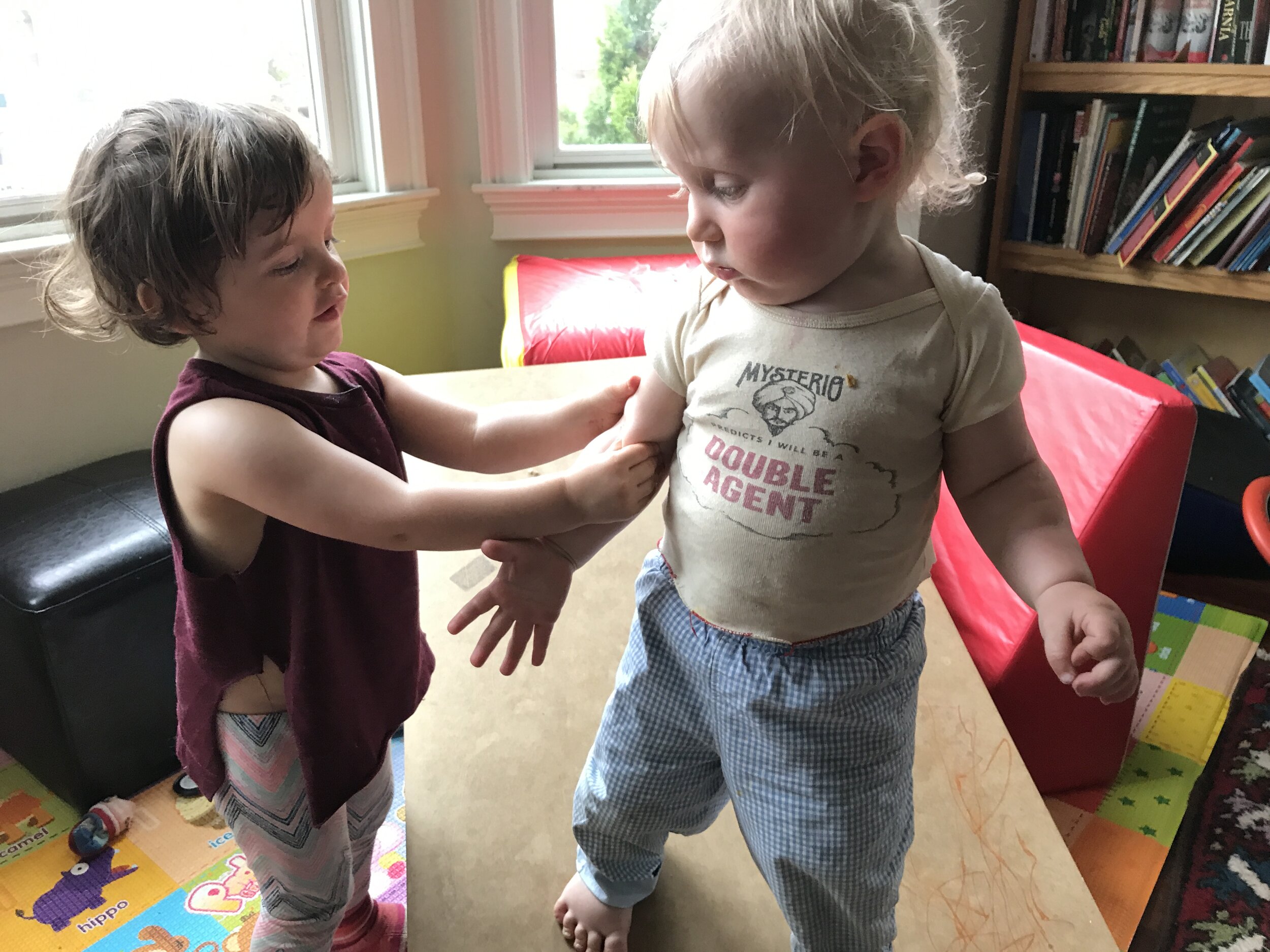Consent and Tickling
Teaching touch with consent builds trust and empathy.
CONSENT
Consent is an incredibly important conversation we will have with our children throughout their lives. We can start in infancy and toddlerhood by introducing the idea at a developmentally appropriate level.
Examples of this are:
Asking permission before picking the child up (from birth!)
Asking if the child would like to sit on my lap to put shoes on, not pulling the child onto my lap and assuming that’s okay.
Asking if I can wipe the child’s nose with a tissue, not sneaking up from behind to do it.
Asking the child if he would like to get into his stroller himself or if he would like me to put him in the stroller.
Are you seeing a pattern? I always ask permission.* I think it through like this- If I would not do it to a peer or adult without having a conversation about it first, I offer the same respect to the child.
This is a really important part of changing the script with our children. Seeing them as fully human, with the rights of every other human, helps us remember the respect piece. And this is something that can be hard to grasp, because so many of us were raised with the unconscious leftover from the generation of “children are to be seen and not heard.” When I was a kid, our needs were considered less important than the needs of the adult; it’s how you learned your place.
When we ask permission, we teach our children an important lesson in how all humans are expected to interact with other humans: with respect and dignity from the start.
Of course, toddlers mess up. They hit, bite, kick, push — all the things toddlers and preschoolers do when they are learning how to control their emotions. But by modeling respect, we are teaching respect. And our children by watching us.
This permission piece was drilled into me in massage school. Before touching anyone, a massage therapist is expected to ask permission to touch. And I’ve done it enough that I now do it with everything...
Would you like to hold my hand?
Would you like to share a hug?
Can I help you put on your coat?
It empowers the person who is in the vulnerable position (in this case, our child) and it reminds the person in the power position to step back and hand some of that power over. Asking permission is a tiny gesture, but paired with respectful listening can be incredibly empowering and trust building.
*I’m human. Sometimes I forget and remind myself in my head that I want to do it differently next time. But I ALWAYS try to remember to ask permission.
TICKLING
There is “good touch” (consensual) and “bad touch” (non-consensual). Then there’s tickling. Tickling can fall into either category, which gives it its own label of “confusing touch.” In this way, tickling can be an exercise in consent.
Tickling can be a great way to connect with our children. We love to do it because it makes them laugh, and they seemingly love it because they are laughing. But we all know that feeling of being tickled and the tickler not stopping, leaving us without control or autonomy. It can start to feel bad or scary pretty quickly.
It is my strongly held belief that a child should never (EVER- NOT FOR A SECOND) be tickled against their wishes.
So when we tickle, it must be consensual. Tickling can be really fun. In fact, it’s one of my own child’s most requested games. It goes like this:
My child says, “Tickle me!”
I say, “Ok!” And I tickle.
My child says, “Stop!” or “All done!” or “That’s too much!”
I say, “Ok!” And I stop. Immediately. I don’t ask, “Are you sure?” and keep tickling. I don’t ignore it and tickle harder. I stop.
If I am tickling and tickling and my child doesn’t ask me to stop, I stop after a few moments anyway so he can catch his breath.
Chances are in either situation, my child will ask me to tickle him again. And I do.
And the moment he asks me to stop, I stop. Because I know that if he’s asking me to stop, he’s asking if he can trust me. Can I trust that I am still in control of this game? Can I trust that I am still in control of my body? Can I trust that if I say stop, my voice will be heard and respected?
You can see how this conversation starts out with tickling and can keep our children safe as they grow. When someone doesn’t stop when our child say no, it should be a major red flag for them. We as parents and care providers are responsible for teaching children that this is how a body should be respected. Their own body and others.
So when our children inevitably hit, pinch, kick, or poke us without our consent, our response of, “I won’t let you hit me,” or, “Please stop, I don’t like that,” will be another layer of the conversation around consent. I am not consenting to this behavior, I will not let you do that to me. We want our children to respect our bodies, and in return, we must offer the same respect to their bodies. If we push the limit with tickling, we are teaching that “no”/“all done”/“stop” doesn’t really mean no, and pushing the limit is an acceptable practice. And that seems like a dangerous message.
